| Our Publications | ||
| Books by Title | ||
| Books by Author | ||
| Books by Country | ||
| E-books | ||
| About | ||
| Orchid Press E-books | ||
| Distributed E-books | ||
| Our Bookshop | ||
| About Us | ||
| Browse Shop | ||
| How to Buy | ||
| Contact Us | ||
| WE BUY BOOKS AND LIBRARIES | ||
|
||
Individual Titles
 |
Angels and Devils Thai Politics from February 1991 to September 1992 a Struggle for Democracy? by David Murray. With an introduction by Withaya Sucharithanarugse. 1996, 2000, xxvii, 314 pp., 15 figs., 50 b & w pl., 59 cartoons, 21.5 x 15 cm., softbound. ISBN-10: 974-8299-33-3 $23.00 ISBN-13: 978-974-8299-33-4 A detailed account of the events in Thailand from the military coup in 1991 to the elections in 1992, when the democratic forces, or “angels” as they were popularly referred to, won the election and formed the government. The period under review can be seen as an important watershed in Thai political development, with the traditional military/bureaucratic leadership trying to cling to power in an age of increasing internationalism and globalization, and with a growing middle class demanding a more democratic form of government. Although the book very clearly focuses on Thailand, the events described and analysed are placed within the broader framework of the development of democracy in the international setting, and the relevance of various models of democratic development to the Thai situation. “This is a useful book; the narrative is thorough; the material is well organized; the writing is quite lively.” (Development and Change) [Read a review] |
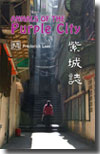 |
Annals of the Purple City by Frederick Lees Second edition 2010 (first published Hong Kong & London 1995) 312 pp., 21.5 x 14 cm., softbound. ISBN-13: 978-974-524-129-9 $26.00 (E-book edition $9.99) In an imaginary Portuguese colony on the south coast of China a beautiful Australian woman gradually achieves her own freedom and integrity through her relationships with four men: her indifferent English husband, her deeply sensual Eurasian lover, an expatriate Hong Kong homosexual dropout and an aged Chinese millionaire. The interplay of personalities is woven into the social and political fabric of a splendid antique city which itself provides the gateway for all the characters to a deeper level of reality: the Purple City, the mystical city which is hidden in all of us. The story mirrors the fusion of Latin and Chinese elements which has typified the Portuguese presence in China and provides insights into the emotional lives of a variety of people when east and west meet. Though a novel in the Western sense it also employs features of Chinese classical fiction in terms of intriguing subplots, use of dreams and poetry and scenes of heightened reality. Annals of the Purple City, with its rich erotic, political and mystical undertones, will appeal to all with interest in the intersection of the Asian and Western worlds. |
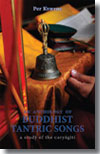 |
An Anthology of Buddhist Tantric Songs A Study of the Caryagiti by Per Kværne 1977, 1986, 2010, xiv, 276 pp., 21.5 x 14 cm., softbound. ISBN-10: 974-8299-34-1 $35.00 ISBN-13: 978-974-8299-34-1 The subject of this study is a small collection of songs known as Caryāgīti, ‘songs of the mystic path’, or literally ‘songs of the proper way of action’. Although the songs were composed perhaps sometime in the 9th-12th century CE, and thus belong to the final phase of Indian Buddhism, their authors, known as siddhas, have defied attempts of historians to place them within an exact historical context, just as they, in their own time, openly defied all religious and social conventions. Many of the songs depict the daily life of the people among whom the siddhas lived. The present volume provides a systematic analysis of this imagery, but it also attempts to uncover the profound doctrine based on Buddhist concepts of spiritual liberation and yogic techniques, which, at least according to the Sanskrit commentary, is the esoteric message of the songs. These songs hold a unique place in India’s spiritual and literary heritage, yet in many ways they have been imperfectly understood. This study clarifies many points that have hitherto remained obscure and provides a fresh and deeper insight into their structure and contents. “The author is to be congratulated for bringing out such a controversial but fascinating text of the Buddhist Tantra.” S. R. Banerjee, The Journal of the International Association of Buddhist Studies, Vol. 1-1. |
 |
Architecture and its Models in Southeast Asia By Jacques Dumarçay 128 pp., 70 b&w illustrations, chronological table, index, 15 x 21 cm., softbound ISBN-10: 974-524-027-3 $17.00 ISBN-13: 978-974-524-027-8 This thought provoking study of the development of architecture, and the impact of architectural models on this evolution, in southeast Asia, draws for its early examples primarily from surviving Hindu-Buddhist monuments in Cambodia and Java. Dumarçay argues that, despite the fact that individual physical locations may merit innovation, new construction nevertheless tends to be constrained by pre-existing architectural models, appropriate to the new situation or otherwise, which are held within the collective conscience of a given culture. This tendency may further be strengthened in the event that an insecure regime seeks to employ architectural monuments to aggrandize its political position. The inappropriate use of models may also occur when architectural styles are transplanted from one culture into another. A break from the models of the past-and thus true innovation-may develop only when a master builder both has sufficient confidence in his own artistic vision and works within a context that allows him the freedom to express this vision. |
 |
Before Kampuchea: Preludes to Tragedy by Milton Osborne 2nd edition, 2004. 208 pp., index, 21.5 x 15 cm., softcover. ISBN-10: 974-524-044-3 $18.00 ISBN-13: 978-974-524-044-5 The year that Milton Osborne judges to have been a turning point in Cambodia’s modern history was 1966, a year he spent working in Phnom Penh and travelling widely in the countryside. He recounts many telling—and moving—personal experiences during this time; the corruption and political manoeuvring within capital, visits to the provinces, and, above all, friendships with Cambodians who were to make their own direct contributions to the years ahead. Before Kampuchea provides both a knowledgeable, personal record of people and places in a rapidly changing society, and a penetrating analysis of the factors that were soon to plunge a country into chaos and disaster. |
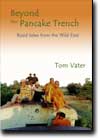 |
Beyond The Pancake Trench: Road Tales from the Wild East by Tom Vater 2004. 192 pp., 16 colour plates, 21.5 x 15 cm., softcover. ISBN-10: 974-524-047-8 $23.00 ISBN-13: 978-974-524-047-6 Vater’s observations on the human condition, as he experiences it firsthand along the less tourist-beaten paths of South and Southeast Asia, result in a no-holds-barred account of life in the region, distinctly as not described in the glossy brochures. Figuratively and at times literally far removed from the glittering urban centers and pampering resorts—the images of Asia that occur to most—the author presents a keen-eyed vision of the region’s underbelly. Vater observes and records the stories of the hunters and their prey, the marginalized and the mad, from among desperate locals and foreign interlopers alike. For all who want a better understanding of the realities—and surrealities—of the region, but definitely not for the faint of heart. [Read a review from the South China Morning Post] [Read a review from Farang Untamed Travel Magazine] [Read a review from Lifestyle & Travel Magazine] [Read a review from The Fortean Times] |
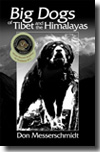 |
Big Dogs of Tibet and the Himalayas A Personal Journey by Don Messerschmidt 2010, xiv, 268 pp., 40 b & w illustrations, 5 maps, bibliography, index, 23 x15 cm., softbound. ISBN-13: 978-974-524-130-5 $29.50 WINNER - Maxwell Medallion for Excellence, 2012, Dog Writers Association of America This is a book of discovery of the exotic and relatively rare breeds of big dogs from Tibet and the Himalayas: the Tibetan mastiff, the rare KyiApso (the ‘bearded’ or ‘shaggy’ Tibetan mastiff), the Himalayan mountain dog, and the least known Sha-kyi (Tibetan hunting dog). Research on Tibetan dogs is contentious. This book challenges some of the conventional wisdom about the big dogs with evidence showing how some big dog fanciers have gotten it wrong. It questions the notion that there were gigantic dogs in history, an idea that has inspired some modern breeders to create enormous critters, mistakenly evoking a mythical past—and much more. Simply a ‘must read’ for all big dog owners and admirers. I’ve just completed a wonderful morning reading through your canine charivari… it’s a cracking book. It is patently both a labour of love and a work of exhaustive scholarship. You’ve done a magnificent job.Charles Allen, author of popular historical books on the Himalayas. You do know that the s**t is going to hit the fan when you publish, right? You’re going to tick off a lot of people!! Personally, I think that could be a good thing for the breed if it gets some folks thinking.A Tibetan dog breeder (anonymous) [Read a review from literarydog.com] [Read a review from Chowkidar Magazine] [Read a review from Amazon.com] [Read a review from ECS Nepal] [Read a review from The Italian Tibetan Mastiff Club] [Read a review from Peace Corps Worldwide] Download an excerpt from the book, published in ECS Nepal. |
 |
A Bridge of Dreams by Ezra Kyrill Erker 2012, 216 pp. 20.3 x 13.3 cm, softbound. ISBN 978-974-524-148-0 $19.95 A British fugitive escaping his own demons finds unfinished business in UNTAC-era Cambodia. An anarchist group struggles against the odds and an enemy they can barely remember. A Japanese doctor travels to an isolated rural clinic to tackle his country’s mental health crisis—and almost loses himself. A shaman’s grandson from northern Luzon makes the long journey to Manila—and oversees the extinction of his own culture. The fourteen stories comprising A Bridge of Dreams have disparate settings and voices, yet textures and mythologies, drawn from a common source, link them together. The characters are situated on the cusp of cultures, caught in the wrong place or the wrong time, moving towards or away from what defines them, through a context inherently Asian. |
 |
The British Humiliation of Burma by Terence Blackburn 2000. 166 pp., 5 maps, 27 col. pl, 4 b & w plates and 45 illustrations, bibliography, index, 21.5 x 15 cm., softbound. ISBN-10: 974-8304-66-3 $23.00 ISBN-13: 978-974-8304-66-3 This is a richly illustrated book on the outrageous behaviour of the British government, driven largely by merchant and missionary interests, towards the Kingdom of Burma. It is a concise and useful summary of events surrounding and leading up to the three Anglo-Burmese wars (1824-26, 1852, 1885-86), and investigates an issue long ignored or covered up by writers until now—what happened to the fabulous riches in gold and precious stones so shamelessly looted from the Mandalay Palace. [Read a review] |
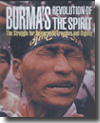 |
Burma’s Revolution of the Spirit The Struggle for Democratic Freedom and Dignity (available in English, Thai, and Burmese, see ISBN numbers below) by Alan Clements and Leslie Kean. Foreword by H H the Dalai Lama. Preface by Dr Sein Win. Essay by Nobel Laureate Aung San Suu Kyi. 1994, 1995, 112 pp., 111 col. pl., 9 b & w plates, 1 map, 29 x 25 cm., softbound. ISBN-10: 974-8299-44-9 $25.00 ISBN-13: 978-974-8299-44-0 Also published in Burmese, (ISBN-10: 974-7315-81-5) and Thai (ISBN-10: 974-8299-40-6) $25.00 each. A gripping photographic record of Burma and the ruthless crushing of the democratic opposition in 1988, and the subsequent struggle for democratic freedom and the right to live in peace and dignity. The photographic material has been donated by some of the world’s leading photographers, and written material has been contributed by a number of well-known personalities. |
 |
Cambodian Interlude Inside the 1993 United Nations’ Election by Tom Riddle 1997, 2000, 210 pp., 20 b & w plates. 21.5 x 15 cm., softbound. ISBN-10: 974-8299-36-8 $20.00 ISBN-13: 978-974-8299-36-5 Told by irreverent American United Nations Volunteer Tom Riddle, this is an inside look at the UN in the field and at life in Cambodia as the country emerges from the holocaust and international isolation. Arriving in Cambodia just a week after the UN begins what will be its largest operation ever, the author offers a rare, often humorous glimpse of the chaos behind the statesmanship and the rocky path to Cambodia’s triumphant 1993 election. “The author is successful in presenting a faithful personal narrative of the elections as seen by a low-ranking person in the United Nations effort. The book is fast, agreeable reading, and the author’s picture is clear and colorful. One also gets a good sense of the mood in Phnom Penh in the heady time of the massive UN presence.”Jeffry C. Gallu, Cambodian Instiutte of Human Rights. (Crossroads 13:2) [Read a review] |
 |
Capital and Karma Capitalism and Hinduism Compared by Øyvind Jaer 1998. 204 pp., index, bibliography, 21.5 x 15 cm., hardbound. ISBN-10: 974-8299-02-3 $39.00 ISBN-13: 978-974-8299-02-0 This is a book about cultural translation and comparison between the seemingly incomparable: Hinduism and Capitalism. Some might argue that one cannot compare Hinduism and Capitalism. Hinduism, though undoubtedly first and foremost a religion, is also the institution which organizes Hindu society and economy. And Capitalism is also a culture: a system of beliefs, ideas, values and practices which govern typical modern lifestyles. Both Hinduism and Capitalism can be conceived as cultural logical systems generally influencing the way people think, feel and communicate. Such a comparative exercise brings forth seemingly opposite worlds, as conceptualized in the present work through antinomies like action/inaction, individualism/holism, the economic or the religious project, the activist versus the yogi. Yet there is a common reference point in the concept of the duality of action/Karma-structure/Dharma. It is argued that the duality of action-structure is a particularly fertile ‘bridgehead’ for cultural translation and comparison between Hinduism and capitalism. Both Hindu and Western traditions have produced sophisticated theories of action and how action relates to agency and structure. The duality of action-structure is implicit in the Karma/Dharma teachings which portray the essence of Hinduism. |
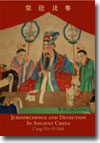 |
Crime and Punishment in Ancient China The Tang-Yin-Pi-Shih by R. H. van Gulik 2007. 212 pp., 4 b & w woodcuts, index, 24.5 x 17.5 cm., hardcover. ISBN-10: 974-524-091-5 $40.00 ISBN-13: 978-974-524-091-9 The Tang-Yin-Pi-Shih is a record of 144 criminal and civil court cases, judged in the courts of ancient China, spanning a period of some 1,400 years of the country’s history, commencing approximately 300 BCE. During this period, China’s judiciary was chosen from among the ranks of the country’s scholar-officials, who, dispatched to various parts of the Empire often with little or no prior training in the legal arts, fulfilled the role of both investigative detective and court judge in the provincial centers of the land. Casebooks such as the Tang-Yin-Pi-Shih were thus essential tools of the appointees, providing guidance and precedence to which to refer, when the courts were confronted with challenging cases. Compiled in 1211 CE by Kuei Wan-jung, the author applies his prodigious linguistic skills to render the present translation both informative and highly entertaining. R. H. van Gulik was also the author of a popular series of detective novels, based in ancient China and featuring the semi-historical Judge Dee Gong-An. It will soon become evident to fans of Judge Dee that van Gulik drew much inspiration for his novels from the Tang-Yin-Pi-Shih. |
 |
Crucifying the Orient The Colonization of Caucasus and Central Asia by Kalpana Sahni 1997. 300 pp., numerous illustrations and 4 maps, 21.5 x 15 cm., hardbound. ISBN-10: 974-8299-50-3 $39.00 ISBN-13: 978-974-8299-50-1 This major work lays bare the willful destruction of peoples, cultures and the environment by a centralized state. It is about the dehumanization of society, of human dignity and human values. The nightmare goes back to czarist times with the colonization of the ancestral lands of the Caucasian and Central Asian peoples. As so admirably diagnosed by Edward Said in his major work ORIENTALISM, it was at that time that the orientalist attitudes surfaced - resulting in the denigration of the conquered peoples who were portrayed as savage barbarians. The Soviet leaders and system largely continued the basic policies and perpetuated the basic attitudes of the czars towards the indigenous peoples of the conquered lands. [Read a review] |
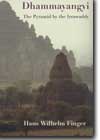 |
Dhammayangyi: The Pyramid by the Irrawaddy by Hans W. Finger 1st English edition 2004. 90 pp., 40 colour illustrations, 4 maps and plans, 21.5 x 15 cm., softcover. ISBN-10: 974-524-045-1 $17.50 ISBN-13: 978-974-524-045-2 This book is a lively and personal account of a stranger visiting Burma, who travels to its historical centre, the village of Pagan. It describes his encounter with its people and the children of the temple, and through exploring the ancient Dhammayangyi temple, he embarks on a fantastic journey of discovery, deep into Pagan’s and its inhabitants’ history. The narrative reveals the terrors imposed by the temple’s royal creator, and the dark legacy of its construction and continuation, reflected by the myths and legends surrounding it— legends which are still passed on by word of mouth and preserved in the beliefs of local inhabitants, today. |
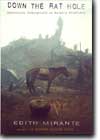 |
Down The Rat Hole: Adventures Underground on the Burma Frontier by Edith Mirante 2005. 192 pp., 3 colour plates, 3 maps, 21.5 x 15 cm., softcover. ISBN-10: 974-524-050-8 $21.00 ISBN-13: 978-974-524-050-6 A new memoir of the author’s journeys among the brave indigenous peoples of some of Asia’s most remote and violent regions. Knowledgeably obsessed with Burma’s struggle for freedom, American artist/activist Mirante breaks laws and infiltrates borders, in impassioned journeys of discovery that take her through China, India, Laos, and chaotic Bangladesh. Down the Rat Hole is a wild and exotic headlong plunge into a hidden world of guerrilla warfare, heroin and jade trading, the AIDS pandemic, rainforest destruction, strikes and rioting, and one of the worst natural disasters of the 20th Century. [Read a review from the South China Morning Post] [Read a review from Irrawaddy Magazine] |
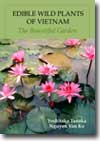 |
Edible Wild Plants of Vietnam: The Bountiful Garden by Dr Yoshitaka Tanaka & Dr Nguyen Van Ke 2007. ix, 176 pp., 136 colour plates, map, glossary of plant and medical terms, bibliography, indexes to plants by botanical names, botanical families and Vietnamese names, 23 x 15 cm., softcover. ISBN-10: 974-524-089-3 $26.00 ISBN-13: 978-974-524-089-6 Since the dawn of human history, people have gathered and consumed wild plants, for both nutritional and curative purposes. Over the course of millennia, our knowledge of the benefits of these plants has steadily grown, passed down from generation to generation primarily by oral tradition. A vast, invaluable body of knowledge on the use of wild plants remains among many traditional communities to the present day. In Edible Wild Plants of Vietnam: The Bountiful Garden, a total of 130 species of wild plants, their characteristics, distribution, use and efficacy are described, accompanied by illustrations of each plant. The present study thus carefully records the knowledge of wild plants by the indigenous peoples of Vietnam, and is a step toward our preservation of this important data for posterity. As many neighbouring countries share similar flora, it is also hoped that this study will benefit not only Vietnamese, but also those in other Asian countries. This volume will be of interest to botanists, nutritionists and naturopathic healers as well as to the general reader. |
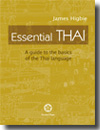 |
Essential Thai A Guide to the basics of the Thai language by James Higbie 2011, 234 pp., 25 x 19 cm., including introductory Thai-English dictionary, softbound. ISBN-13: 978-974-5242-15-9 $29.50 Essential Thai is a complete learning package for those who want to acquire basic working skills in the Thai language, quickly and efficiently. Freshly updated and back by popular demand, Essential Thai includes a download link to MP-3 audio files to introduce the student to Thai pronunciation and beginning phrases. Focussed completely on developing practical language skills, Essential Thai introduces conversation and grammar, commonly used vocabulary and how to read Thai script in a logical, graduated, manner. Whether you are travelling or planning to live in Thailand, whether shopping, booking a hotel, ordering a meal or speaking on the phone or much more, this is the language tool for you. Features : - Download link to MP-3 audio introduces pronunciation and first lessons - Step-by-step approach to learning the basics for living and travelling - Learn how to read Thai script - Introductory English-Thai dictionary - Easy to learn and read phonetic spelling and tone markers - By the author of the most popular advanced Thai text, Thai Reference Grammar |
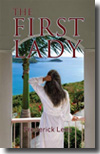 |
The First Lady by Frederick Lees 2012, 356 pp., 21 x 14 cm., softbound ISBN-13: 978-974-524-146-6 $26.95 The corrupt and despotic rule of Antonio Floresco, longtime dictator of the Carolines, seems finally to be unraveling. The economy is in shambles, the people have been reduced to desperate poverty, a communist insurgency is rapidly making gains in the countryside. Even the Church has turned its back on the regime. Meanwhile, scheming members of the aristocracy, as well as Floresco’s most trusted cabinet ministers and sinister forces from abroad, actively plot the downfall of this brilliant and still charismatic, if deeply flawed, leader. His only remaining allies seem to be his Oxford-educated daughter, Conchita, and his wife, the First Lady. History, though, has demonstrated that if there is one creature more venal, ambitious and self-serving than a despotic ruler it is likely to be the despot’s consort. And the First Lady of the Carolines is no exception to the rule. In the midst of this explosive mixture, Conchita has fallen in love with the wealthy nephew of one of Floresco’s most vocal critics. While Floresco himself has a rare soft spot in his heart reserved for his daughter, the First Lady has no such weaknesses… A gripping and unforgettable tale of lust and intrigue, love and redemption—and particularly recommended reading for the world’s remaining dictators. |
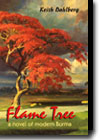 |
Flame Tree: A Novel of Modern Burma by Keith Dahlberg 2004. 240 pp., 21.5 x 15 cm., softcover. ISBN-10: 974-524-048-6 $15.50 ISBN-13: 978-974-524-048-3 Returning to Burma to teach for a month, Dr. George Daniels and his wife, Vienna, had not expected to get involved in a war. But a renegade colonel disrupts the balance of power between the dictatorship and the insurgent hill armies, flooding the Thai border with refugees. George discovers information crucial to ending the conflict—and his wife is held hostage to prevent his using it—at the Flame Tree truce conference. The story of a man who has spent a lifetime avoiding confrontation, and who now finds himself in a mediator’s role between a dictatorship and rebel armies fighting for survival. |
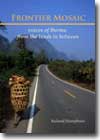 |
Frontier Mosaic: Voices of Burma from the lands in between by Richard Humphries 2007. 200 pp., 80 colour images, 3 maps, bibliography, index, 24.5 x 17.5 cm., softcover. ISBN-10: 974-524-092-3 $29.95 ISBN-13: 978-974-524-092-6 To the long-suffering Burmese people and particularly for Burma’s frontier minorities, the Thai border represents a potential escape from poverty and government repression, and a chance for a better life. Despite the natural hospitality of many Thai people and the efforts of individuals and NGOs involved in support programs, the reality of life in the frontier region rarely matches the dream. In Frontier Mosaic, author Humphries provides first-hand accounts and his own observations of the personalities he encounters, on both sides of the border, as he traverses the length of the Thai- Burma frontier. We are introduced enroute to the insurgent soldier, the mother, the migrant and the artist, among many other typical inhabitants. In tales of hope and dashed dreams, certainties and ambiguities, conflict, exploitation and coexistence, Humphries paints an informative and empathetic picture of life in the region, of interest to specialists and general readers alike. [Read a review from The Japan Times] [Read a review from Irrawaddy Magazine] [Read a review from Mizzima News] |
 |
George Leigh Mallory by David Pye Foreword by George Mallory II, and a new introduction by Tristram Pye. 1927, 2002. 208 pp., 6 b&w plates, 21.5 x 15 cm., hardbound. ISBN-10: 974-524-010-9 $22.95 ISBN-13: 978-974-524-010-0 The first of several biographies of the Everest pioneer, George Mallory, whose body was dramatically recovered on the mountain 1999, this was the only biography written by a contemporary, fellow mountaineer and close personal friend. Long regarded as containing some of the finest detail of all mountaineering literature, this work, often quoted in later biographies, was published for the first and only previous time in 1927. Long out of print and previously virtually unobtainable. |
 |
George Mallory by David Robertson 1969, 1999. 279 pp., 21 b & w plates, 5 maps, 21.5 x 15 cm., softbound. ISBN-10: 974-8304-42-6 $25.00 ISBN-13: 978-974-8304-42-7 On 1 May 1999 an American expedition, searching on Everest for the bodies of George Mallory and Sandy Irvine, found Mallory’s body on a ledge at approximately 27,000 feet. The climbers carefully buried it, with appropriate ceremony, under large rocks at an undisclosed spot. They continued, without success, their search for Irvine’s body and for the vest-pocket Kodak camera that might have yielded evidence that Mallory and Irvine attained the summit. George Mallory’s disappearance on Everest in 1924 secured a place for him as one of the accepted heroes of the 20th century: it tended, at the same time, to overshadow the course of his life as a whole and to obscure the shape and complexity of his personality. In this first full biography, David Robertson—who has had access to all the family papers—follows Mallory’s life from boyhood in Cheshire and at Winchester, through the years from 1905 to 1909 at Cambridge and the years of schoolmastering at Charterhouse. Then on to a happy marriage, service in the First World War, and participation in the Everest Expeditions of the Twenties. Two deep devotions—to the spirit of adventure and to his family and personal friends—were the mainsprings of his life. This book, first published in 1969, shows him not only as a mountaineer of extraordinary skill and action. It portrays a man who developed lively interests in the fields of literature, the arts and the main social and political controversies of his day, and one whose circle of friends included some of his most brilliant contemporaries. Above all, it succeeds in conveying Mallory’s immense but un-self-conscious charm, enhanced by transparent determination to find out what was right—a charm captivating to so many, and so very different, people. David Robertson came to Trinity College, Cambridge, as a Henry Fellow after graduation from Princeton. For several years he was co-editor of the American Alpine Journal. He is now retired from his position as McIntosh Professor of English at Barnard College in New York, and lives in Princeton. |
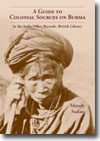 |
A Guide to Colonial Sources on Burma: Ethnic & Minority Histories of Burma in the India Office Records, British Library by Mandy Sadan 2008, 580 pp., 4 maps, indices, 24.5 x 17.5 cm., hardcover. ISBN-10: 974-524-106-7 $50.00 ISBN-13: 978-974-524-106-0 The India Office Records (IOR) of the British Library, in London, include perhaps the richest scholarly resources anywhere on conditions in Burma in late British colonial times. The purpose of this guide is to provide a general introduction to sources in the IOR for the study of minority histories of Burma. The guide contains extensive lists of references, but it also contains introductory comments on the structure of the India Office Records as a whole, to help researchers make the best use of this wonderful historical resource. The primary focus is on English language sources relating to the period 1824–1948, but there are also brief comments on sources outside this frame of reference. |
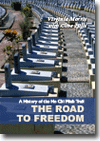 |
A History of the Ho Chi Minh Trail The Road to Freedom by Virginia Morris with Clive Hills 2006. 196 pp., 107 colour, 24 b & w illustrations, 11 maps, index, 24.5 x 17.5 cm., hardcover. ISBN-10: 974-524-076-1 $29.95 ISBN-13: 978-974-524-076-6 The Ho Chi Minh Trail was a decisive factor in the defeat of American forces in the Vietnam War. At the peak of its 16 years’ operation, the Trail ran through North and South Vietnam, Laos and Cambodia. Despite an estimated 4 million tons of US bombs, efforts to stop the transport of essential goods to the North Vietnamese Army over the Trail failed, and by the end of the war over a million tons of supplies had been transported and 2 million troops had traversed the Trail. At its peak there were 120,000 people working on the Trail. Throughout the war around 20,000 died, some 30,000 were seriously injured; the numbers of people affected by chemical spraying and unexploded bombs are still unrecorded. The author and photographer, the first Westerners to traverse the entire length of the Trail, trace the footsteps of the hundreds of thousands who designed, built, used and fought along it. Interviewing villagers along the Trail, as well as key military and political figures on both sides of the conflict, including the mastermind of the trail, Vietnam’s General Vo Nguyen Giap, A Road to Freedom presents a balanced and fascinating account of this most remarkable feat of engineering and tactical warfare of the Vietnam War era. Voted on its release as Travel Book of the Week by Frank Barrett of London’s Mail on Sunday, 13th August, 2006. [Read a review from the Journal of the Siam Society] [Read a review from NYMAS Review] [Read the foreword by Gen. Sir John Reith] [Read praise for this book from prominent sources] |
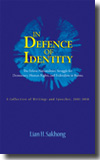 |
In Defence of Identity: The Ethnic Nationalities’ Struggle for Democracy, Human Rights and Federalism in Burma by Lian H. Sakhong First edition 2010, x, 323 pp., 30 col. and 2 b & w photos, 3 maps, 21 x 14 cm., softcover. ISBN-13: 978-974-524-133-6 $25.00 Lian H. Sakhong has spent most of his adult life engaged in the struggle with the oppressive rulers of Burma for the reinstatement of justice and basic freedoms for his ethnic group, the Chin people, as well as for other Burmese ethnic minority peoples and in fact for all Burmese. He has written and spoken relentlessly in support of this noble cause with an uncommon degree of energy, intelligence and eloquence, all to a degree that has gained him significant honours and his cause wide attention. The present collection of Dr. Sakhong’s lectures, papers and speeches spans the past ten years. Together these essays provide the reader a rich portrayal of the history and culture of the Chin people and the present status of their brave struggle for nothing less than their personal and collective identity—in Dr Sakhong’s words, their struggle to live their lives as authentic human beings again. A highly informative, even inspirational, read, both for those new to the cause of human rights in Burma and for those who have long been engaged in this historic effort. Dr. Lian H. Sakhong is the Chairman of Chin National Council and the Vice-Chairman of Ethnic Nationalities Council (Union of Burma). A post-graduate student at Rangoon University when the student-led democracy movement erupted in 1988, he quickly joined the movement and was arrested, interrogated and even tortured by the military junta on three separate occasions between 1988 and 1990. He continued his studies in Sweden following his escape from Burma and was awarded the Ph.D. degree from Uppsala University in 2000 for his dissertation, Religion and Politics among the Chin People in Burma. He has since both written and edited a series of books and papers on the political and social situation in modern Burma and was recognized for his efforts to improve the lives of all Burmese people with the award of the Martin Luther King Prize, in 2007. |
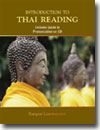 |
Introduction to Thai Reading: by Rungrat Luanwarawat 2007. 214 pp., 21 x 16.5 cm., includes an audio CD, softcover. ISBN-10: 974-524-103-2 $25.00 ISBN-13: 978-974-524-103-9 Learning to read Thai is the path to a more profound grasp of the language. This book is based on years of experience teaching foreigners to speak and read Thai, and builds on the author’s observations in the classroom about which rules of grammar, spelling and pronunciation most commonly impede their progress. Introduction to Thai Reading, designed to be a comprehensive foundation of 24 progressive lessons, will pave the way towards a solid and advanced knowledge of the Thai language. Those who complete the book will have acquired not only essential Thai reading skills, but also the vocabulary and grammar needed for basic Thai speaking. Download an MP3 file of the first CD track (4 MBytes) |
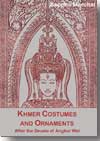 |
Khmer Costumes and Ornaments: After the Devata of Angkor Wat by Sappho Marchal (translated from French by Merrily Hansen) First English edition Orchid Press 2005. (1st French edition, 1927) 128 pp., 44 b&w pl., including numerous line drawings, 21.5 x 15 cm., softcover. ISBN-10: 974-524-057-5 $16.00 ISBN-13: 978-974-524-057-5 The artist Sappho Marchal was the daughter of the renowned French conservator of Angkor, Henri Marchal. She spent the early years of her life in Cambodia, surrounded by the magnificent ruins of the Khmers, and produced the present study at age 23. Her fine line drawings present the myriad details of ornament and costume depicted on the stone reliefs of Angkor Wat with a clarity that could not be captured, even then, on film. Since that time, many of the stone carvings have severely deteriorated, rendering Marchal’s drawings all the more valuable as a record for present-day students and restorers of Angkor. [Read a review from the www.devata.org] [Read a review from the Journal of the Siam Society] [Read a review from Cambodia Book Reviews] [Read a review from Amazon.com] [Read a review from The Nation] |
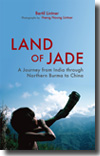 |
Land of Jade: A Journey from India through Northern Burma to China by Bertil Lintner, photographs by Hseng Noung Lintner 2011, 476 pp., 91 b & w photos, 7 maps, index, 21.6 x 14cm., softbound ISBN-13: 978-974-524-139-8 $35.00 Bertil and Hseng Noung Lintner, and their baby daughter, born enroute, spent one and a half years traveling through northern and eastern Burma, from 1985-87. Throughout their account, they describe, with rare and deep insight, the struggle by northern Burma’s ethnic groups against brutal Burmese army rule, and record the decline and fall of the Communist Party of Burma. During their incredibly arduous 2,275 kilometre trek, mostly on foot and at times in great danger, they recorded the history of a forgotten 40-year war, an account which otherwise would never have been committed to paper in such rich detail. Land of Jade further provides poignant descriptions of the efforts of simple ethnic tribes-people to forge lives amid the larger struggles of political antagonists, drug lords, foreign interlopers and assorted other opportunists—a situation that remains painfully relevant to many in diverse locations to the present day. “Land of Jade still ranks as one of the best I have read, describing not only the couple’s remarkable 18-month, 2,275 kilometre expedition, but also providing remarkable new insights into the long-forgotten struggle by the Naga, Shan and Kachin ethnic groups against Burmese military rule.”John McBeth, Reporter: Forty Years Covering Asia, Talisman Publishing, Singapore 2011 |
 |
Languages and History Japanese, Korean and Altaic by Roy Andrew Miller 1996, 230 pp., 21.5 x 15 cm., hardbound. ISBN-10: 974-8299-69-4 $35.00 ISBN-13: 978-974-8299-69-3 Summarizing what is known of the history and prehistory of Korean and Japanese, a problem that necessarily involves their possible genetic relationship to the Altaic (Turkic, Mongol, Tungus) languages, the author examines--and demonstrates that it is necessary to reject—arguments now dominant in most Western scholarship that would attribute all similarities among these languages to borrowing rather than genetic relationship. He argues that the now widely accepted truism that “Korean and Japanese cannot be Altaic languages” because “there are no Altaic languages” can no longer seriously be maintained. Korean and Japanese both possess important early written records, until now either ignored or largely misrepresented by those who dismiss the Altaic hypothesis. The author shows that these texts, when approached with proper philological precision, bolster the Altaic hypothesis in much the same way that the discovery of Tokharian and Hittite materials earlier stimulated and clarified Indo-European historical linguistics. |
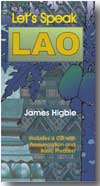 |
Let’s Speak Lao by James Higbie 2005. 230 pp., 17.5 x 10.5 cm., softcover, includes CD ROM. ISBN-10: 974-524-067-2 $15.00 ISBN-13: 978-974-524-067-4 Laos, blessed with rich cultural traditions, natural beauty and a warm and hospitable population, is still, remarkably, ‘off the beaten track’ as far as the hordes of tourists one encounters elsewhere in SE Asia. For the new arrival, Lets Speak Lao is the only tool the visitor will need to start to communicate with Lao people. This is a phrasebook / dictionary with a difference-in addition to tackling all of the needed topics from greetings to shopping, food and drink, accommodation and transport, each copy contains a mini-CD ROM containing over 20 minutes of carefully structured pronunciation lessons, presented by the author, a veteran language trainer, together with native speakers. Also a must for visitors to NE Thailand’s Isaan region, where the predominant language is Lao. Download an MP3 file of the first CD track (2 MBytes) |
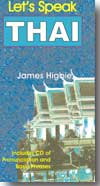 |
Let’s Speak Thai by James Higbie 2005. 217 pp., 17.5 x 10.5 cm., softcover, includes CD ROM. ISBN-10: 974-524-066-4 $15.00 ISBN-13: 978-974-524-066-7 For the new arrival to Thailand , nothing seems more impenetrable than the local language. Phrasebooks abound, but how does one begin to master the unique sounds of the language, required of the very first Thai words the visitor attempts? Let’s Speak Thai is a phrasebook/dictionary with a difference. In addition to tackling all of the needed topics from greetings to shopping, food and drink, accommodation and transport, each copy includes a mini-CD ROM containing over 20 minutes of carefully structured pronunciation lessons, presented by the author, a veteran language trainer, together with native speakers. Featuring in addition an explanation of basic grammatical structures, all words and phrases in English / phonetic / Thai script and a 140 page dictionary, this is the only tool that the visitor will require to start communicating in Thailand. Download an MP3 file of the first CD track (2 MBytes) |
 |
The Lore of the Chinese Lute: An Essay on the Ideology of the Ch’in by R. H. van Gulik 2011, 310 pp., 1 colour and 38 b & w plates, 8 woodcuts, index, 24.5 x 17.5 cm., hardcover. ISBN-10: 974-524-112-1 $50.00 ISBN-13: 978-974-524-112-1 The lute, ch’in or guqin is one of China’s oldest and most revered musical instruments. Records indicate that it has been a favourite of the literary classes for more than 2,500 years; Confucius himself was a great lover of the instrument. Over the centuries, it became representative of the life, taste and pastimes of the Chinese literati. In addition to its contributions to solo and orchestral musical arrangements, a wealth of symbolic meaning accrued to the lute, over time. Not only was knowledge of the instrument reserved for the literati, its study was believed to be conducive to meditation and to facilitate intellectual enlightenment. While a significant body of literature has been written on the lute in Chinese, the present monograph is the first to assemble a broad picture of the instrument and its cultural significance in English. The author, a renowned Sinologue and linguist, studied the playing of the instrument under one of the most famous lute masters of his age. |
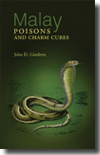 |
Malay Poisons and Charm Cures by John D. Gimlette 2011, [1929] 320 pp., 3 b & w illustrations, bibliographic references per chapter, index, 21.5 x 14 cm., softcover. ISBN-13: 978-974-524-144-2 $30.00 Published almost a century ago, Malay Poisons and Charm Cures remains a classic and still definitive reference on the pharmacopoeia and practices of Malay healers, shamans (bomoh) and sorcerers (pawing). Gimlette, a British physician, resided in the Malay State of Kelantan for over a decade, during which he gathered the data that comprises the core of this work. Intended as a medical reference for the Colonial Administration, Gimlette’s observations were far more widely encompassing, shedding light not only on traditional pharmacology and toxicology, native theories of disease, medical practice, religious ritual and superstition, but also on Malay anthropology generally. With the present revival in interest in traditional medicine, herbal toxins and treatments, as well as in shamanic practice, Gimlette’s work offers rich rewards for a new generation of readers. “The republication of Gimlette’s Malay Poisons and Charm Cures is welcome… let us hope that Gimlette’s treatise on the toxicology of common and esoteric trees, shrubs and animals falls into the hands of kindly spirits.”David J. Banks, American Anthropologist, Vol. 74.4 |
 [Read Chapter 1] |
Mandarin: A novel of Viet Nam by John Havan 2007. 332 pp., 21.5 x 15 cm., softcover. ISBN-10: 974-524-100-8 $17.95 ISBN-13: 978-974-524-100-8 Young Bach seemed to have it all—the first born son of the wealthiest and most powerful mandarin at the Hue court, he grew to be a robust and handsome young man, irresistible to the women in his life, brilliant at his studies and with a natural gift for the martial arts. Bach was a true ‘diamond son’. But Bach’s was a case of the right birth at the wrong time. The feudal system that had dominated Viet Nam for more than a thousand years was locked in a death struggle with the forces of French colonial exploitation, Japanese imperialist lust and Ho Chi Minh’s communist fanatics. The odds were stacked against Bach from the beginning and the mandarin’s way of life was doomed in the cataclysmic birth throes of the modern socialist state. An epic tale of love and war, struggle, loss and rebirth, Bach’s journey utterly captivates, from its first pages to its climactic finale. |
 |
Mara in the Land of Smiles: An Ancient Fable for Today by Ian Mayo-Smith (‘Ajahn Ian’) with watercolour illustrations by Din Hin 2007. 123 pp., 16 colour illustrations, 21.5 x 15 cm., softcover. ISBN-10: 974-524-090-7 $23.00 ISBN-13: 978-974-524-090-2 Mara in the Land of Smiles is a delightful fable set in a mythical country that vaguely resembles Thailand, hundreds of years ago. It recounts the tale of the epic struggle between Mara, the Lord of Delusion, and the followers of The Great Teacher, for the hearts and minds of the populace. Mara’s weapons are fear, jealousy, hatred and greed, spread and stoked by his four wicked agents on earth. As the story commences, only four souls have resisted Mara’s siren call the king of the land, an ageing monk, a poor peasant and a wealthy merchant. Mara plots the seduction of these last four virtuous citizens to secure his final victory. Will hatred and greed defeat love and generosity? Will jealousy and fear vanquish bravery and respect? All shall be revealed in Ajahn Ian’s inspiring tale. ‘Ajahn Ian skilfully bridges the space between this ancient fable and the modern reader (and)demonstrates the power of a very simple magic leading to the transformation of individual human lives.’Sulak Sivaraksa, Thai Buddhist social activist. [Read a review from ASIANEWS] [Read a review from the Bangkok Post] |
Mini Orchids
Buddha, Dharma, SanghaThis delightful set of three little books outlines in simple (but not simplistic) terms the life of the Buddha, Buddhist teaching, and monastic life in Thailand. The author, a former American journalist, lived in Chiang Mai for many years before his untimely death in 1995. His views are based on extensive reading on the sources of Buddhism, intensive interviews with senior and knowledgeable monks, plus his own religious participation and observations.
Written primarily for Westerners, the books are intended to give an understanding of and insight into a religion and its practices; a religion that, twenty-five centuries after the Buddha’s death, attracts the adherence of millions and millions worldwide, not only in Asia, but also in increasing numbers in the West.
 |
The Buddha’s Life Man, Myth, Facts and Fable by Gerald Roscoe 1999. 96 pp., 15 x 10.5 cm., softbound. ISBN-10: 974-8304-43-6 ISBN-13: 978-974-8304-43-4 [Read an excerpt] |
 |
The Monastic Life Pathway of the Buddhist Monk by Gerald Roscoe 1999. 96 pp., 15 x 10.5 cm., softbound. ISBN-10: 974-8304-44-2 ISBN-13: 978-974-8304-44-1 |
 |
The Good Life An Introduction to Buddhism for the Westerner by Gerald Roscoe 1999. 96 pp., 15 x 10.5 cm., softbound. ISBN-10: 974-8304-46-9 ISBN-13: 978-974-8304-46-5 |
 |
Buddha, Dharma, Sangha by Gerald Roscoe 1999. 288 pp., 16 x 11 cm., hard Slipcase. ISBN-10: 974-8304-90-6 $19.95 ISBN-13: 978-974-8304-90-8 This is a boxed set of the above three titles. |
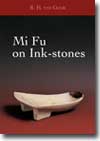 |
Mi Fu on Ink-stones Translated with commentary by R. H. van Gulik Second imprint 2006 (first edition Peking, 1938). xii, 71 pp., 2 colour, 11 b & w illustrations, map, index, 24.5 x 17.5 cm., hardcover. The original Chinese text of Mi Fu’s Yen Shih is also reproduced, alongside the English translation. ISBN-10: 974-524-083-4 $35.00 ISBN-13: 978-974-524-083-4 The great Song Dynasty poet and artist, Mi Fu (1051-1107), wrote treatises on painting and calligraphy, in addition to the present work on ink-stones, translated here by the eminent Dutch diplomat and Sinologist, Dr. R H van Gulik. In the case of the first two works, the subjects of Mi Fu’s deliberations have long since disappeared. There remain, however, numerous surviving examples of ink-stones from the Song and earlier dynasties, enabling us to compare Mi Fu’s words with the actual objects he describes. The importance of the ink-stone as an essential tool of the Chinese literati and thus the importance of our understanding its nature to our overall comprehension of Chinese brushwork, is but one aspect of the present work. The inkstone is, in addition to a tool, a work of art in its own right, combining the skill and wit of the sculptor with the ancient Chinese tradition of appreciation of beautiful stones. In Mi Fu on Ink-stones, Dr van Gulik provides not only a guide to the connoisseurship of this essential treasure of the scholar’s studio, but also an illuminating glimpse into the mind of this brilliant eleventh century artist. [Read more about the life of R. H. van Gulik] |
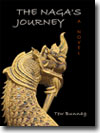 |
The Naga’s Journey: A Novel by Tew Bunnag 2007. 270 pp., 21.5 x 15.2 cm., softcover. ISBN-10: 974-524-102-4 $16.95 ISBN-13: 978-974-524-102-2 THE NOVEL THAT PREDICTED THE FLOODING OF BANGKOK—FOUR YEARS BEFORE IT HAPPENED Set in modern-day Bangkok, The Naga’s Journey chronicles the unlikely friendship of three people from disparate backgrounds, thrown together by a dramatic event at the cremation of a notorious public figure. The consequence of their response sets in motion their relationship and reveals a past, connected to the dead man, which each of them has tried to avoid confronting. Throughout the novel lurks the dark presence of the Naga, the unpredictable and powerful element of water, potentially both nurturing and destructive. The tale reaches its climax when Bangkok, a city degenerating morally as well as physically, is threatened by a massive flood, an event that ends in tragedy and catharsis for the three friends. The tale’s ultimate message of hope and reconciliation will be an inspiration for all who embark on The Naga’s Journey. The Naga’s Journey is the first novel by Tew Bunnag, author of several books on meditation and the martial arts, and most recently of Fragile Days—Tales from Bangkok, a critically acclaimed collection of short stories and After the Wave, another collection of stories which deals with the post Tsunami situation in South Thailand. ‘Flawless in both style and structure. Distinctive prose. Rich in imagination. An enchanting journey for everyone thanks to Tew Bunnag’s masterful storytelling. He writes with a magic touch, revealing a glimpse of “unseen” Bangkok that readers will find unforgettable.’Jane Vejjajiva, Thai author and winner of 2006 SEA Write award. ‘The Naga’s Journey is not an ordinary novel. Tew Bunnag has skilfully recreated the complexity of contemporary Thai society. He enables the reader an understanding of its delicate interdependence by creating his own intricately woven setting of high society, police mafia, prostitution, slum dwelling and ecological devastation.’Sulak Sivaraksa, Thai Buddhist social activist. [Read a interview with the author] [Read a review from BK Magazine] [Visit the Author’s Website] |
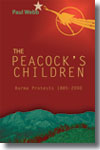 |
The Peacock’s Children: Burma Protests 1885-2000 by Paul Webb 2009, 267 pp., map, notes, bibliography, 23 x 15 cm., softcover. ISBN-10: 974-524-069-9 $25.00 ISBN-13: 978-974-524-069-8 This book records the struggle for independence and democracy in Burma from the fall of the monarchy to the present day. Research was carried out in the British Library—Indian and Oriental Collection in London for valuable material concerning the British colonial period and its response to nationalist and student protests. Post-colonial material is complemented by extensive interviews in Burma, Thailand and Australia. The account is at times a harrowing one, underscoring the repeated dashed hopes for freedom, and the confusion and contradictions amongst Burmese themselves as to the right path to be followed to achieve true independence. In the Epilogue, the author brings us forward to 2003. Regrettably, little has changed since then; for Burma democracy seems as far away as ever. |
 |
Pilgrim Tax and Temple Scandals A Critical Study of the Important Jagannath Temple Records during British Rule by Sri Prabhat Mukherjee. Edited by Nancy Gardner Cassels 2000. 160 pp., 6 photos, index, 21.5 x 15 cm., softbound. ISBN-10: 974-8304-72-8 $23.00. In India, 195 rupees ISBN-13: 978-974-8304-72-4 Published in cooperation with the South Asian Institute of the University of Heidelberg, Germany. This is an edited collection of documents which Prof. Mukherjee selected during the very last years of his life for their importance to the history of the Jagannath Temple in Orissa, India, and their relationship with British administrators in the early nineteenth century. The documents represent the archival evidence which formed the basis for the first half of his book, History of the Jagannath Temple in the 19th Century, published in 1977. In this selection he comments on the significance of particular documents, but since he did not live to complete the task, the editor has annexed to the twenty-six primary documents supplementary citations from other sources. The work offers a tantalizing glimpse of Lord Jagannath’s relations with the East India Company. |
 |
Portuguese Pioneers Of Vietnamese Linguistics Pionniers Portugais de la Linguistique Vietnamienne Jusqu’en 1650 by Roland Jacques 2002 408 pp., bibliography, 24.5 x 17.5 cm., softbound. ISBN-10: 974-8304-77-9 $36.00 ISBN-13: 978-974-8304-77-9 The development and eventual official adoption of a Romanized script (‘Quoc Ngu’ or ‘national language’) to represent the spoken language of Vietnam has had enormous impact on that country’s cultural and intellectual development. Replacing an older script based on Chinese style ideograms, the inherent efficiency of Quoc Ngu has been a major contributor to Vietnam’s comparatively high literacy rate, and thus to the country’s modernization. In linguistic circles, the development of Quoc Ngu has long been attributed primarily to the efforts of a 17th century French missionary to Vietnam, Alexandre de Rhodes. The present study, however, demonstrates that de Rhodes’ accomplishment was made possible by his building upon a foundation of the work of the Portuguese missionaries and linguists who preceded him. Drawing on previously unpublished 17th century works in Latin and contemporary correspondence in Portuguese, the author demonstrates the pivotal role played by Portuguese clerics in the development of the script. In doing so, he also explains the many fascinating synergies between Quoc Ngu and written Portuguese. An original and important new work on Vietnamese linguistics, this book is of interest not only to scholars of Asian languages, but also to all with interest, either professional or lay, in the history of medieval Vietnam and its development into the modern state. Bilingual English / French edition. [Lire une revue en français de Collège Érasme] [Read a review of this book from Quaderni Vietnamiti] |
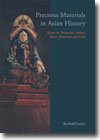 |
Precious Materials in Asian History: Essays on Turquoise, Amber, Ivory, Diamond and Gold by Berthold Laufer 2019, 275 pp., 2 col. & 24 b & w plates, index, 24.5 x 17.5 cm., softcover. ISBN-10: 974-524-109-1 Price to be announced. ISBN-13: 978-974-524-109-1 Essays on the sources, usage, social significance and folklore of some of the most prominent precious materials in the history of China, South Asia and the Himalayas. A rich source of information on the anthropological implications of these materials, and the sometimes subtle links that developed between East and West in the quest for these treasured substances. Berthold Laufer (1874-1934) was one of the earliest and most erudite Western scholars of Asian culture. He was the primary contributor to the great collection of anthropological material now preserved at the Field Museum of Natural History, Chicago, a collection he curated for some 26 years. A world renowned expert on jade in China, his writings on which remain important references to the present, the current collection of essays summarize his writings on precious substances other than jade. Forthcoming |
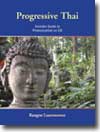 |
Progressive Thai by Rungrat Luanwarawat 2007. 187 pp., 21 x 16.5 cm., includes two audio CDs, softcover. ISBN-10: 974-524-098-2 $25.00 ISBN-13: 978-974-524-098-8 Progressive Thai, the first of a planned new series of language learning tools, is the product of thousands of classroom hours of instruction to foreign students of the Thai language. Comprised of sixteen progressive lessons, the beginning student will gradually develop the ability to communicate in Thai in many practical, day-to-day situations, as well as build a sound foundation upon which to progress to more advanced studies. Each lesson is explained in simple and clear terms, and is accompanied by practical dialogue, providing the student both with the tools for daily conversation and with fascinating insights into Thai culture. With explanations of grammatical points, exercises with answer keys at the end of the book, and including two audio CD ROMs on which each lesson is enunciated, Progressive Thai is ideal both as a classroom learning tool and for self study. Download an MP3 file of the first CD track (2.5 MBytes) |
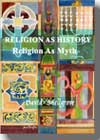 |
Religion as History—Religion as Myth by David Snellgrove 1st edition 2005. 160 pp., 21.5 x 15 cm., softcover. ISBN-10: 974-524-070-2 $18.00 ISBN-13: 978-974-524-070-4 An eminent scholar’s critical examination of the teachings of some major religions, but primarily Christianity and Buddhism, to a lesser extent Islam and Judaism. The author’s main thesis is that no religion can claim to be the only true religion without involving human society either in bitter conflict or in merciless persecution. Furthermore the author illustrates how such claims to absolute truth are often based on doctrines which may have little or nothing to do with teachings of the founder of a particular religion and which in terms of present-day knowledge of the history of the human race are no longer tenable. However, the primary interests of the author concern Buddhism, especially as related in its origins in the remarkable mystical insights of early Brahmanical sages. In the last section of this book, he treats the Buddhist and Brahmanical ways of salvation as a quest which parallels and might well usefully inspire the researches of present-day scientists who probe the mysteries of time and space. |
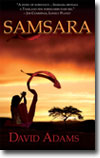 |
Samsara by David Adams 2007. 420 pp., 21 x 13 cm., softcover. ISBN-10: 988-97764-0-5 $12.95 ISBN-13: 978-988-97764-0-4 Exchanging Western values for far-off Thailand, Gunnar Ray plans to teach in the countryside and absorb the country’s ancient wisdom. When monsoon rains rip into logged-over lands above his adopted village, catastrophe strikes. Gunnar’s innocence is swept downstream along with hundreds of Thai lives. Spiritually adrift, he washes up in the offices of the Bangkok Times, a crusading reporter hell bent on derailing corrupt officials at war with the Thai environment. He is not alone. a summons from an enigmatic Buddhist monk with rumored mystical powers and a near militant love for the jungle is just the sort of lead that Gunnar thrives on. In a forgotten province, he will test whether his pen is indeed mightier than the military’s sword. When the forest-protecting monk of the Northeast is arrested, Gunnar sets off on a cross-country journey to summon support. With the monk’s beautiful niece as his guide, he navigates the currents and eddies of remote provinces that few Westerners have penetrated. Gunnar’s articles aimed at freeing the first-ever imprisoned Thai monk transform him into a high profile activist—and target. Ultimately he must choose: his growing love for the monk’s niece and commitment to the cause, versus the now daily threat of an assassin’s bullet. Ecological thriller, love story, spiritual journey—Samsara scratches the bloody underbelly of a nation in conflict. |
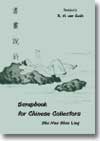 |
Scrapbook for Chinese Collectors Translated with commentary by R. H. van Gulik Second imprint 2006 (first edition privately printed, Beirut 1958). 100 pp., incl. 84 pp., translation and notes and 16 pp. reproducing the original Chinese text; 3 b & w illustrations, 21.5 x 15 cm., hardcover. ISBN-10: 974-524-081-8 $26.00 ISBN-13: 978-974-524-081-0 The Shu Hua Shuo Ling—treatise on painting and forgery—was written in the eighteenth century by the relatively obscure Chinese scholar, Lu Shih-hua. It might have vanished from the landscape of Asian art history, had the eminent Sinologue, RH van Gulik, not recognized its essential value to our modern understanding of Chinese connoisseurship. Its worth lies in the intellectual honesty of the author in his description of the artist in traditional China, the artist’s motivations and the means by which his work was evaluated. Of particular interest, with the emphasis, at times bordering on the paranoiac, that persists today on the issue of authenticity, is Lu’s observations on this matter among connoisseurs of his time. One wonders what chance we have to determine the authenticity of a work now, when even those with profound knowledge of the artists, their styles and work in the eighteenth century were challenged to do likewise. One also leaves Lu’s treatise wondering if authenticity, as we define it, matters as much as we might lead ourselves to believe. An important, provocative work of interest to all who wish to acquire a deeper understanding of Chinese painting. "…a collection of memoirs and advice to be relished."Joseph P. Love, Monumenta Nipponica [Read more about the life of R. H. van Gulik] |
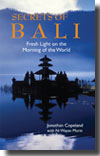 |
Secrets of Bali: New Light on the Morning of the World by Jonathan Copeland with Ni Wayan Murni 2010, 312 pp., 110 line drawings, 1 map, glossary, bibliography, index, 21.5 x 14 cm., softcover. ISBN-13: 978-974-524-118-3 $30.00 (E-book edition $11.99) With its dramatic vistas, its attractive, hospitable people and its rich cultural traditions, the magical isle of Bali has captured the hearts and imaginations of millions, ever since visitors from the West began to arrive in the early 20th century. Incredibly, ancient Balinese cultural traditions remain richly intact today, in the face of 21st century modernity and a highly developed tourist industry. Yet few visitors ever really begin to understand the colourful pageantry that surrounds them virtually everywhere they travel on the island. Secrets of Bali is the key to this understanding. From Balinese life, religion, festivals and offerings, architecture, music, dance, textiles, dress, carvings and paintings, masks, manuscripts, meals and much more, this is the one book to which the visitor can turn for the answers. A ‘must’ for foreign visitors, residents, and those everywhere who have fallen under the spell of ‘The Morning of the World’. “Eloquent, enthusiastic, and jargon–free.” Dr Angela Hobart. [Read a review from ASEASUK News] [Read a review from Tropical Life Magazine] [Read a review from Hello Bali Magazine] [Read a review from The South China Morning Post] [Read a review from Bali & Beyond] [Read a review from The Bali Advertiser] [Read a review from The Jakarta Post] [Read a review from The Bali Times] [Read about the remarkable life of co-author Murni] |
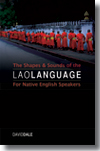 |
The Shapes and Sounds of the Lao Language: For Native English Speakers by David Dale 2014, 152 pp., includes CD ROM, 21.5 x 14 cm., softcover. ISBN-13: 978-974-524-151-0 $25.00 “I wanted to say, This is my friend, but I accidentally said, This is my pig!” Mastering a language as different to English as is Lao may first seem to be impossible… with its strange-looking script and its multitude of tones and vowels, the task can be decidedly intimidating. Compounding the problems, many native Lao language teachers don’t fully understand how to effectively explain these aspects of their language to the expatriate. Language learning materials dealing with Lao phonetics and orthography are sparse and incomprehensive. Yet, many native English speakers are successfully learning to speak fluent Lao and one of the tools in their arsenal is this very book. In these pages you will discover a path to make sense of it all, coming from someone who was once in your shoes. Rather than a linguistic treatise, The Shapes and Sounds of the Lao Language is a practical guide to help you to become fluent in Lao. Using a combination of relevant descriptions, language learning tricks, flash cards, drills and comparison tracks on the enclosed audio CD, you will be able to conquer some of the most difficult aspects of the language. Certainly, learning a second language takes hard work and patience, but by following the instructions outlined in this book, you will get the most out of your efforts and will be delighted at the progress you never believed you could make. |
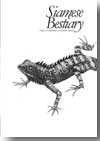 |
Siamese Bestiary written & illustrated by Kristiaan Inwood (1978) 2005 Second revised edition, index, 136 pp., 70 b&w drawings, 25.5 x 19 cm., softcover. ISBN-10: 974-524-058-3 $23.00 ISBN-13: 978974-524-058-2 Thailand. The name evokes images of golden pagodas, emerald rice fields, jungled mountains, a happy, gregarious people. Siamese Bestiary reveals another aspect of Thailand—the intimate co-existence shared by animal and human life in the tropics. Lizards play hide-and-seek on walls and ceilings; frogs colonize bathrooms and crabs doze behind water jars; turtles make nocturnal visits; snakes take short cuts through kitchens; catfish walk from one pond to another… Blending anecdote, observation and humour in this unusual and attractive volume, the author lovingly chronicles and depicts the antics of animal and human characters in and around his Thai home. [Read a review & excerpts from Bangkok Airways In-flight Magazine] [Read a review from The Nation] [Read a second review from The Nation] [Read a review from The Bangkok Post] |
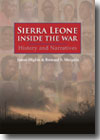 |
Sierra Leone: Inside the War: History and Narratives by James Higbie and Bernard S. Moigula 2017, x, 310 pp., 110 b & w photos, 9 maps, 24 x 17 cm., softcover. ISBN-13: 978-974-524-198-5 $22.95 E-book edition $5.99 In 1991 a brutal civil war broke out in Sierra Leone, a small country on the west coast of Africa. Masterminded by Muammar Qaddafi of Libya and Charles Taylor of Liberia, the war engulfed the poverty and corruption-ridden country for ten years. Notorious for “blood diamonds” and amputations, the war saw child soldiers murdering and mutilating civilians, and young people abducted to be fi ghters and sex slaves. Sierra Leone: Inside the War includes a detailed history of the civil war and narratives from over thirty Sierra Leoneans who witnessed or took part in the fi ghting, including child soldiers. Through the historical facts and the narrators’ words, readers can gain a comprehensive understanding of the politics of the war, the motivations of the fi ghters, and the feelings and thoughts of people caught up in the tragic violence that swept through the country. |
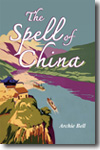 | The Spell of China by Archie Bell 2018, 246 pp., i-xiv, 52 b&w photos, 1 map, bibliography, index, 23 x 15 cm., softcover. ISBN-13: 978-974-524-208-1 $21.95 The year is 1917. The self-proclaimed Emperor of China, Yuan Shikai, died the previous year and Sun Yat-sen returns from exile to form a new Nationalist government. China declares war with Germany, in support of the Western efforts in Europe—but China itself is on the brink of descending into feuding factions, and eventually its own civil war. For the moment, though, all is calm, and life goes on in the Middle Kingdom much as it has for thousands of years. Tourists must first travel by steamer to British Hong Kong—a journey of some two weeks from North America and up to a month from London. China has yet to establish its first tourism agency, so the intrepid visitor must rely books such as this to make his or her way around. And what a trip Bell takes us on! From Hong Kong to Canton, Macau, Shanghai, Hangzhou and on to Peking where we tour the Forbidden City and the Great Wall. And further to Korea, the Hermit Kingdom, then under Japanese rule. The Spell of China is truly a trip back in time; a spellbinding journey for the modern tourist, amateur historian and armchair traveller alike. |
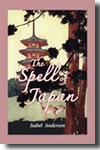 | The Spell of Japan by Isabel Anderson 2018, 260 pp., i-xvi, 54 b&w photos, 1 map, bibliography, index, 23 x 15 cm., softcover. ISBN-13: 978-974-524-206-7 $21.95 The year is 1914. A distinguished couple had arrived overland two years previously from Europe via Russia and Korea to Yokohama and on to Tokyo. The gentleman, Mr. Larz Anderson, assumes the role of American ambassador to Japan. His wife, Isabel—a glamourous, Boston-born heiress—submerges herself in the rich, yet little known culture of Imperial Japan. With ready access to Japanese high society, Isabel bears first-hand witness to court custom, art, costume and ritual as few Western visitors have before. Yet her lack of pretension and keen observation allows her to describe the life of the common people of old Japan in just as lucid prose. The Spell of Japan takes the us through Japanese-occupied Korea, to the gilded temples of Kyoto and the splendours of the Imperial court of Tokyo. An illuminating journey for the modern tourist, the armchair traveller and amateur historian alike. |
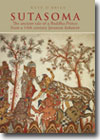 |
Sutasoma: The ancient tale of a Buddha-Prince from a 14th century Javanese kakawin Translated with commentary by Kate O’Brien 2008, 294 pp., 22 col. plates & 9 figures, index, 24.5 x 17.5 cm., hardcover. ISBN-10: 974-524-107-5 $45.00 ISBN-13: 978-974-524-107-7 The 14th century epic poem, Sutasoma, relates the life of a prince, born an incarnation of the Jina-Buddha Wairocana. It follows his spiritual journey to enlightenment, and his temporal journey through marriage, kingship and eventual victory over the mighty, world-threatening demon, Porußåda. Kate O’Brien’s new translation delivers to the reader a highly approachable and lively rendition of this Buddhist epic, comparable in both complexity and scale to that of the Råmåyana, yet significantly less known or understood. O’Brien’s accompanying analysis reveals a fascinating aspect of the poem, until now not fully comprehended. Aside from its function to elucidate the compatibility of Buddhahood and kingship, it also reveals within its verses what amounts to a literary mandala, as complex and philosophically rich as the beautiful mandala images of Tibetan Buddhism, yet firmly rooted in the Javanese milieu of the Majapahit polity which spawned this version of a very ancient tale. It is this literary mandala that is the path to Sutasoma’s enlightenment, and this in turn the key to his success as a World Protector and Universal Monarch. This entertaining and attractively illustrated edition will appeal to readers with interest in the literary traditions of southeast Asia and of tantric Buddhism, and also to a wider audience who wish to understand the foundations, both mystical and practical, underpinning much of Javanese and Balinese society today. [Read a review from TAASA] |
 |
Thai Law: Buddhist Law Essays on the Legal History of Thailand, Laos and Burma Edited by Andrew Huxley 1996, 2000, 220 pp., 21.5 x 15 cm., softbound. ISBN-10: 974-8299-86-4 $18.00 ISBN-13: 978-974-8299-86-0 Between 1880 and 1930 Thai law was modernized. Using the French civil code as their model, the kings of Siam recast traditional Thai law into western form. This book describes Thai law as it was before 1880. For at least five hundred years, perhaps a thousand years, the Thai have used written lawbooks. During the last twenty years Thai scholars have systematically searched for these lawbooks through the book chests of monasteries. As a result there is now a very large number of legal manuscripts available for study. In this book six experts describe the new discoveries and assess how much our view of traditional Thai law has to change. The essays have a regional focus, dealing with the Northern Thai traditions of Lanna, the provincial cities of central Thailand, the Southern Kingdom based on Nakhon Si Thammarat, the law texts of Laos, the new discoveries in Burma and finally with Bangkok and its famous Three Seals Code. [Read a review from Griffith Law Review] |
 |
Thai Reference Grammar by James Higbie and Snea Thinsan 2002, 2003, 2004, 2008, 2014, xviii, 464 pp., Thai, English & Transliterated indices 24.5 x 17.5 cm., softbound. ISBN-10: 974-8304-96-5 $39.00 ISBN-13: 978-974-8304-96-0 There are many phrasebooks and course books for beginning-level Thai but until now there has been no book that explains higher-level Thai sentence structure and functional vocabulary. Many students of the Thai language find that basic-level Thai is easy to pick up, but that the language becomes more difficult at higher levels. (For example, there are four ways to say ‘because’ and eleven ways to say ‘only’.) Thai Reference Grammar fills the need for a work that explains high-level Thai sentence structure and vocabulary. The book presents clear explanations of advanced Thai structure, illustrated with examples of typical Thai speech. The authors, an American and a Thai both with advanced degrees in linguistics and language teaching, analyzed thousands of Thai sentences to formulate clear and concise explanations for all the important sentence patterns of the Thai language. The book is arranged by topic for easy reference. Examples are given in both Thai script and transliterated Thai, written in the English alphabet with no special phonetic symbols. Tones are marked with a special font that shows the level of the sound of each word, essential to pronunciation in tonal languages like Thai. [Read a review] |
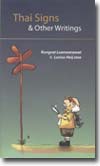 |
Thai Signs and other Writings by Rungrat Luanwarawat and Lucius Heijstee 2008. 138 pp., 17.5 x 10.5 cm., softcover. ISBN-10: 974-524-104-0 $16.95 ISBN-13: 978-974-524-104-6 This book is intended primarily for non-Thai readers who have encountered language barriers when traveling around Thailand given that many signs, labels and forms are presented in Thai script only. Lots of words and signs are listed per topic, for example signs on doors, at markets, temples, on the toilet, etc. In addition, the book also includes the names of all provinces in the country, most common food orders, useful information shown on labels, as well as general document and form wordings. A must for all visitors as well as foreign residents of Thailand! |
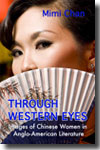 |
Through Western Eyes: Images of Chinese Women in Anglo-American Literature by Mimi Chan Second, revised edition, 2011; 352 pp., 22 x 14 cm., softcover. ISBN-13: 978-974-524-134-3 $29.95 Since China and the West first came into contact centuries ago, descriptions of Chinese women of widely varying accuracy by travelers and writers have fueled the imagination of Western readers. By the early 20th century two images predominated-that of the passive, fragile and vulnerable beauty, and that of the seductive, ruthless and scheming ‘dragon lady’. Many modern English language writers and filmmakers have seized on these easily duplicated stereotypes, extending them even to the end of the 20th century and beyond. In a series of penetrating chapters, Mimi Chan explores the early origins and 20th century development of these images in popular fiction, the prejudices and misunderstandings that they perpetuate, and some of the works that have attempted to present a fairer, more nuanced, more ‘human’ view of Chinese womanhood. An important study of value to all who seek a clearer understanding of those who hold up ‘half the (Chinese) sky’. Praise for the first edition: "Chan’s book is many things at once: literary criticism, feminist criticism, popular culture exposé. Its safe to say that there is something here for everyone."Derron Jones, Sunday Morning Post, Hong Kong |
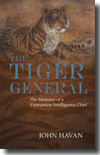 |
Tiger General The Memoirs of a Vietnamese Intelligence Chief by John Havan 2011, 440 pp., 22 x 14 cm., softcover. ISBN-13: 978-974-524-135-0 $19.95 "Move quietly, hit hard"—a lesson learned as a child vagrant under a bridge in Ha Noi, and one that was to serve Hai well as he rose inexorably to the heights of success, in the shadowy world of intelligence and counter-insurgency. Born the illegitimate son of a Vietnamese nobleman in the early years of the twentieth century, Hai suffers under the added burden of a curse at birth that dooms him to 36 years of ill fortune. A born survivor, like the proverbial cat with nine lives, he continually re-invents himself under the French, Viet Minh and Japanese regimes. At thirty-six years of age, he comes into his own and his rise is unstoppable, emerging as the ‘Tiger General’ in the South Vietnamese Republic, whose gallant alliance with America ended in 1975. Not one to give up, the Tiger moves to Washington as a senior political consultant to continue the fight to bring freedom back to his people. A gripping and unforgettable saga of struggle, bravery, love and loss amid one of the most turbulent periods of the 20th century, by an author who writes with the authority of one who lived through many of the events he describes. [Read a review from the Bangkok Post] [Read an interview with the author by Ezra Kyrill Erker] |
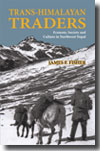 | Trans-Himalayan Traders: Economy, Society and Culture in Northwest Nepal by James F. Fisher 2017, 242 pp., 19 b&w photos, 10 figures, 5 maps, appendices, endnotes, bibliography, index, 23 x 15 cm., softcover. ISBN-13: 978-974-524-201-2 $25.00 On an isolated Himalayan hillside in northwest Nepal, the village that was the subject of this groundbreaking study in the late ‘60s—at the time two weeks’ walk from the nearest commercial transportation—was as culturally complex as it was remote. While the villagers were largely self-sufficient, it was the ways in which they still depended on outside forces that anthropologist Fisher analyses compellingly in this work. Republished almost 50 years after the original fieldwork to coincide with the publication of a recent follow-up investigation by Fisher (Trans-Himalayan Traders Transformed), the two volumes provide a fascinating and significant view of the evolution of this once remote culture. (Reprint; originally published by University of California Press, 1987) “…well researched, well analysed and equally well-written ethnography. The author’s style is insightfull and easy-going, with a certain wit and frankness… exceptionally good..”. Donald A. Messerschmidt, Mountain Research and Development, Vol. 6, No. 4. |
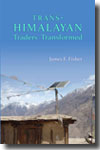 | Trans-Himalayan Traders Transformed: Return to Tarang by James F. Fisher 2017, 258 pp., 29 b&w photos, 2 figures, 4 maps, endnotes, bibliography, index, 23 x 15 cm., softcover. ISBN-13: 978-974-524-202-9 $25.00 Returning to Tarang, a remote village in northwestern Nepal, 44 years after conducting his groundbreaking study there, anthropologist Fisher explores the ways in which modernization and mobility have transformed the livelihood and culture of these once isolated people. Through individual life histories he constructs and analyses the economic and cultural impacts that political, environmental and commercial revolutions in Nepalese society at large have had on the people of Tarang, both transforming their lives and also consolidating and elaborating centuries old societal patterns. Together with Fisher’s original study (Trans-Himalayan Traders), recently republished, this volume will be of interest to social scientists and others focused on the changing South and Central Asian worlds. |
 |
A Way with Words Language and Culture in Tokelau Society by Ingjerd Hoëm 1995. 232 pp., 30 col. pl., 4 b & w ill., 2 maps, 21.5 x 15 cm., hardbound with dustjacket. ISBN-10: 974-8304-08-6 $39.00 ISBN-13: 978-974-8304-08-3 What is the relationship between language and culture? This book explores this issue through a focus on comparative practice in the atoll society of Tokelau in the South Pacific. Through ethnographic descriptions of ‘men’s talk’ and ‘women’s talk’ what is defined as ‘knowledge’ emerges. Local attitudes towards language and aesthetics are shown to influence communicative practices. The issue of power is addressed through a perspective that takes the social distribution of knowledge into account. Issues that bear on cultural identity, as they have emerged throughout the last decades, are intimately connected with current communicative practices. |
 |
Welcome to Burma And enjoy the totalitarian experience by Timothy Syrota 2001. 192 pp., b & w pl. illustrations, bibliography, index, 23.5 x 13 cm., softbound. ISBN-10: 974-524-008-7 $23.00 ISBN-13: 978-974-524-008-7 Hello, this is your tour guide speaking. I’d like to take this opportunity to welcome you all to Burma. As you travel through our beautiful country please do not look beyond the glittering pagodas, do not talk about politics,and please ensure that you do not leave the clearly defined trail. Please acknowledge that our government is working hard to improve the state of the nation and that we do not abuse human rights. Should you not understand this, you are a neo-colonialist axe-handle who works for the CIA. Thank you for your attention and please enjoy your visit.’ A joke, yes, but joking in Burma is a criminal offence punishable with seven years hard labour. [Read an article about the author and book] |
 |
What Do You Pack? If You’re Never Coming Back… 15 True Stories of Those Who Left Their Past Behind compiled by Roberto Di Marco 2014, 268 pp., 21.6 x 14 cm., softcover. ISBN-13: 978-974-524-152-7 $25.00 We have all heard stories about these sorts of people—those who leave the comfort and security of their home, of the family, friends and language that they had known from childhood—and strike out into the unknown, half way around the world, never to return. What do they experience, those who transplant themselves into a culture totally alien to them? How do they adapt? Do they ever adapt? What are their motives to take such a leap? Many will assume that they are running from something—a wife, boredom, responsibilities, the law, or perhaps just from themselves. Are they cowards and loners, or brave adventurers? Within these 15 true life stories the reader will encounter some strange tales and some unusual characters. Some have ended up in paradise and some in hell—but regardless of the destination, their stories are endlessly fascinating and at times truly enlightening. They are a rich mix of adventure, information and yes, even practical advice for those who are considering just such a change. [Read a review from the South China Morning Post] [Read a review from the Jakarta Globe] [Read a review from the Phuket Mail] [Read a review from the Pattaya Mail] |
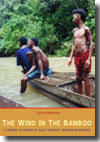 |
The Wind in the Bamboo: A Journey in Search of Asia’s “Negrito” Indigenous People by Edith Mirante 2014, 23 x 15 cm., 308 pp., 45 col. & 11 monochrome photos, 4 maps, glossary, bibliography, index, softcover. ISBN-13: 978-974-524-147-3 $30.00 Historically defined as “Negrito” because they physically resemble small Africans, these forest peoples may have the most ancient ancestry in Asia. Captured for slavery, exhibited at the 1904 St. Louis World’s Fair, nearly exterminated by disease and a cataclysmic volcano, they survive in a few places: Malaysia, the Philippines and India’s remote Andaman Islands. Some are armed with spears and blowpipes, a few with cellphones and graduate degrees. Edith Mirante, author of Burmese Looking Glass and Down the Rat Hole, weaves a compelling Chatwinesque narrative examining race and identity and the environmental, social, political challenges these indigenous peoples face in contemporary Asia. Edith Mirante takes the reader on a great pan-Asian adventure. This is a timely and vital journey among ancient people struggling to survive in the modern world. Emma Larkin, author of Finding George Orwell in Burma. [Read a review from the The Irrawaddy Magazine] |
 |
World.Wide.Web: Chinese Migration in the 21st Century—and How It will Change the World by Bertil Lintner 2012, 208 pp., bibliography, index, maps, 22 x 14 cm., softcover. ISBN-13: 978-974-524-150-3 $23.00 For centuries past, often driven by political upheaval or famine, Chinese have migrated to southeast Asia and beyond, to far flung corners of the globe. Large old ‘Chinatowns’ in cities such as London, Toronto, New York and San Francisco attest to these earlier migrations. Chinese continue to emigrate in large numbers in the 21st century—but this time around circumstances are different. Often encouraged and even facilitated by the Chinese state—officially or otherwise—modern migrants are often well educated and relatively affluent. And China today offers a myriad of opportunities to those who choose to stay. In this wide ranging new study, Lintner researches the locations, motives, perils and successes of modern Chinese migrants, as well as their potential impact on the rest of the globe. Is the state sponsorship of such migration driven by China’s expanding needs for energy, minerals, lumber and fish—or does it include more sinister motives? What is the likely impact of such migration on China’s global diplomatic muscle? To what degree are new Chinese immigrants a ‘fifth column’ in their new homes? What is the role of Chinese ‘triad’ gangsters in this modern exodus? All of these and many more issues are addressed in this timely first-hand report. A ‘must read’ for all China-watchers, or indeed for any who strive to understand the shifting dynamics of world power in the 21st century. [Read a review from The South China Morning Post] |
PO Box 70, Trinity TB, NL, A0C 2S0, Canada
Telephone: +1 709-330-4703